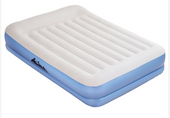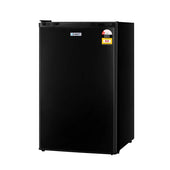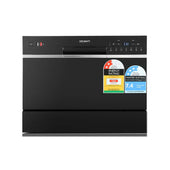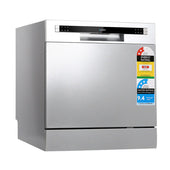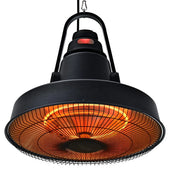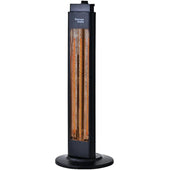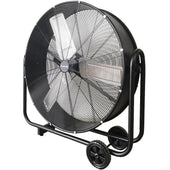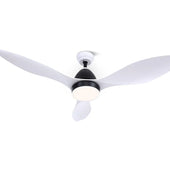Introduction to Sink Styles: Understanding Undermount and Vessel Sinks
When choosing a bathroom sink, understanding the differences between undermount and vessel styles is crucial. Undermount sinks are installed beneath the countertop, creating a seamless appearance that emphasises simplicity and ease of cleaning. They integrate effortlessly into modern or minimalist bathroom designs.
Vessel sinks, on the other hand, are mounted atop the countertop, resembling bowls or basins. These sinks add a striking focal point, making them popular in contemporary or artistic spaces.
While undermount sinks provide a streamlined look, vessel sinks offer an opportunity for unique, eye-catching designs. Each style carries distinct functional and aesthetic benefits, catering to varied preferences.
Design Aesthetics: Which Sink Style Suits Your Bathroom’s Look?
Choosing the right sink style greatly impacts a bathroom’s aesthetics. Undermount sinks, with their streamlined design, blend seamlessly with the countertop, making them ideal for minimalist or modern interiors. They create a clean, during days uninterrupted surface that emphasises simplicity and functionality. On the other hand, vessel sinks act as statement pieces, often capturing attention with their bold, elevated presence.
Common Design Pairings:
- Undermount Sinks: Best paired with marble, quartz, or granite countertops for a cohesive, luxurious look.
- Vessel Sinks: Complement rustic, vintage, or eclectic bathrooms, offering a chance to experiment with shapes and materials.
Deciding between these styles depends on the desired balance between practicality and ornamental flair.
Installation Considerations: Differences Between Undermount and Vessel Sinks
When selecting between undermount and vessel sinks, installation requirements differ significantly.
- Undermount sinks require precise countertop cut-outs and professional sealing to prevent leaks. These sinks are mounted underneath the countertop, demanding sturdy materials like granite, marble, or quartz. Installation complexity typically leads to higher costs and longer preparation times.
- Vessel sinks, on the other hand, are simpler to install, as they sit on top of the countertop. They generally need a single cut-out for plumbing and are compatible with most countertop materials, including wood and laminate. Vessel sinks may, however, require taller faucets or wall-mounted taps to ensure usability.
The contrasting installation needs impact setup duration, labour costs, and countertop choice.
Space Efficiency: How Each Sink Type Impacts Counter Space
The choice of sink type significantly influences how much usable counter space a bathroom will have. Undermount sinks are installed below the countertop, leaving the entire surface unobstructed. This design offers a streamlined aesthetic while maximising usable area for toiletries and other essentials.
Vessel sinks, on the other hand, sit on top of the countertop and tend to occupy more surface space. Their elevated structure may limit the room available for other items, especially in smaller bathroom designs. However, their installation often provides additional storage room underneath by saving depth compared to drop-in styles, which can benefit compact spaces.
Maintenance and Cleaning: Comparing the Upkeep of Undermount vs Vessel Sinks
When it comes to cleaning, undermount sinks offer a seamless integration with the countertop, allowing spills and debris to be swept directly into the sink. This design minimises dirt accumulation around edges, making it easier to maintain. However, ensuring the seal between the sink and countertop remains intact over time might require occasional re-caulking.
Vessel sinks, on the other hand, are fully exposed and require cleaning of both the bowl’s interior and exterior. Their intricate shapes or materials, such as glass or stone, may need specialised cleaning products. Additionally, the area where the sink meets the countertop can be prone to residue buildup, warranting extra attention.
Durability and Longevity: Which Sink Type Stands the Test of Time?
Both undermount and vessel sinks offer distinct levels of durability, influenced by their design and materials.
- Undermount sinks: These are often made from durable materials such as stainless steel, cast iron, or quartz. The seamless integration with countertops reduces exposure to potential damage, such as edge chipping or cracking. Their installation requires solid support, further enhancing their longevity.
- Vessel sinks: Constructed from materials like glass, porcelain, or natural stone, they are stylish but more prone to wear. Glass and porcelain can chip or crack over time, particularly with heavy use. Stone options, while durable, may require additional maintenance to prevent staining or etching.
Maintenance and care further determine which sink type endures daily use.
Cost Comparison: Budgeting for Undermount and Vessel Sinks
When comparing the costs of undermount and vessel sinks, several factors influence the overall expense.
- Undermount Sinks: These typically cost more due to their installation requirements. The sink must be secured beneath the countertop, often involving professional labour. Additionally, countertop materials like granite or quartz may need precision cuts, increasing fabrication expenses. Undermount sinks themselves can vary in price but are often mid-range to high-end.
- Vessel Sinks: Usually considered more budget-friendly, vessel sinks sit atop the counter, requiring less modification to the surface. Installation is simpler and can often be completed as a DIY project, reducing labour costs. The sinks range widely in price, with affordable glass or ceramic options available.
Buyers should evaluate installation costs, materials, and labour to determine the best fit for their budget.
Functionality and Usability: Picking the Right Sink for Everyday Use
When selecting between undermount and vessel sinks, assessing their functionality is crucial for seamless bathroom use. Undermount sinks are integrated beneath the countertop, offering a flush surface that facilitates easy cleaning and maximises workspace. These are especially practical for busy households and minimalistic designs, as they reduce countertop clutter.
In contrast, vessel sinks sit atop the counter, acting as a statement piece and offering increased bowl depth. However, their height may require consideration for accessibility, especially for children or shorter individuals.
Key considerations include:
- Cleaning: Undermount sinks minimise dirt collection along edges.
- Space: Vessel sinks demand adequate counterspace to balance aesthetics and practicality.
- Comfort: Proper faucet height ensures functionality without water splashing.
Understanding daily habits helps determine the sink meeting one's functional needs effectively.
Customisation Options: Finding the Perfect Design to Match Your Needs
When considering sink styles for your bathroom, customisation options play a crucial role in achieving a personalised aesthetic. Undermount sinks are often paired with sleek countertop materials like marble or quartz, allowing for a seamless appearance that enhances modern and minimalist designs. These sinks come in various shapes such as oval, rectangular, or round, providing versatility to suit diverse tastes.
Vessel sinks, on the other hand, offer unmatched artistic flair, with designs ranging from glass bowls to ceramic basins and even natural stone creations. Their free-standing nature makes it easy to incorporate bold colours, textures, and intricate patterns. Each style offers unique potential to harmonise with a bathroom's decor.
Pros and Cons at a Glance: A Quick Summary of Each Sink Style
Undermount Sinks
Pros:
- Encourages a cleaner countertop surface by eliminating raised edges.
- Offers a seamless and streamlined appearance.
- Typically provides more countertop space compared to vessel sinks.
- Easier to maintain and wipe counters directly into the bowl.
Cons:
- Installation can be more challenging and costly.
- Heavier reliance on professional installation for stability.
- Limited compatibility with certain countertop materials.
- Repairs or replacements may require removing the countertop.
Vessel Sinks
Pros:
- Adds eye-catching, artistic style to bathroom design.
- Easier to install with minimal modifications.
- Fits a wide range of materials, finishes, and shapes.
- Customises the sink height to suit personal preferences.
Cons:
- Requires frequent cleaning due to exposed edges.
- Less countertop space around the basin.
- Potential water splashing issues with higher edges.
- Could become outdated depending on design trends.
Choosing Based on Bathroom Type: Master Bath vs Guest Bath Considerations
When selecting between undermount and vessel sinks, the type of bathroom plays a significant role. For master bathrooms, undermount sinks often provide a seamless and spacious aesthetic, ideal for frequent use and cleaning. Their sleek design complements larger countertops and allows for enhanced functionality. Conversely, vessel sinks can be an appealing choice for guest bathrooms, offering a statement piece with a modern and stylish flair. Guest bathrooms typically see less wear, making the vessel’s maintenance concerns less critical. Additionally, vessel sinks can introduce a unique design element, enhancing the space’s visual impact and creating a memorable impression for visitors.
Environmental Impact: How Sink Types Affect Sustainability Choices
Different sink types influence sustainability based on materials, manufacturing processes, and longevity. Undermount sinks often utilise durable materials like stainless steel or quartz, which can be recycled but may require resource-intensive production. Vessel sinks are frequently crafted from glass, ceramic, or stone, offering a mix of renewable and non-renewable options.
The installation process affects waste—undermount sinks may demand adhesive chemicals, while vessel sinks often involve simpler setups that avoid excessive material usage. Water efficiency can vary, as the design impacts how splashback is contained, potentially reducing wastage. Decisions should consider both material sourcing and long-term environmental wear.
Conclusion: Making the Best Decision for Your Bathroom Design
Selecting between an undermount and a vessel sink requires careful consideration of functionality, aesthetics, and lifestyle needs. An undermount sink offers a sleek appearance with efficient cleaning capabilities, making it suitable for modern, minimalist designs or high-traffic bathrooms. On the other hand, a vessel sink serves as a focal point, providing a touch of luxury and customisation options, ideal for enhancing visual appeal in stylish or statement-oriented spaces.
Factors such as installation complexity, maintenance, and countertop compatibility should also influence the decision. Weighing these elements will help ensure the sink choice aligns with the bathroom's overall purpose and design vision.










